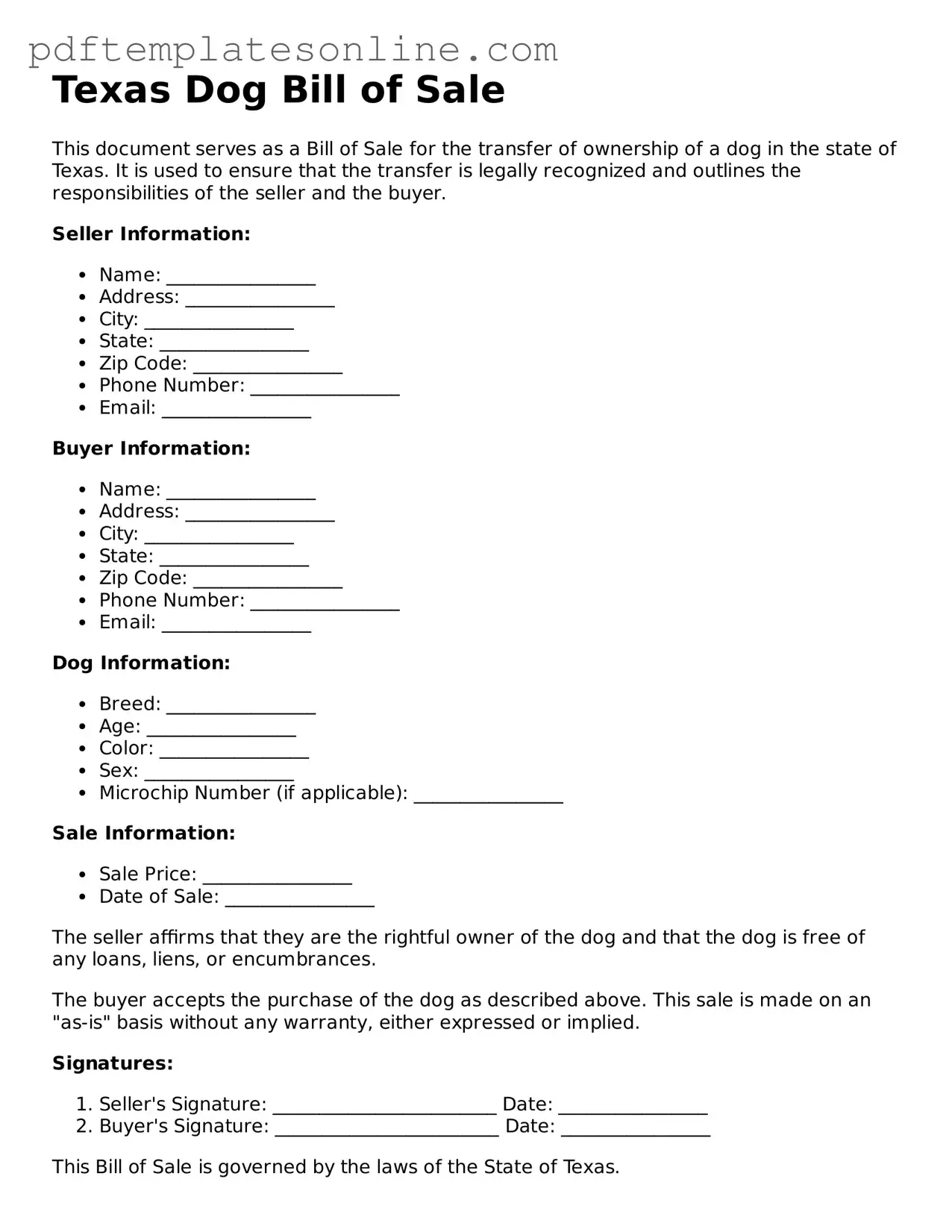When filling out the Texas Dog Bill of Sale form, many people inadvertently make mistakes that can lead to complications down the line. One common error is failing to provide complete and accurate information about the dog being sold. This includes details such as the breed, age, color, and any distinguishing marks. Without this information, the transaction may lack clarity, and future disputes could arise regarding the dog’s identity.
Another frequent mistake is neglecting to include the seller's and buyer's contact information. It’s essential for both parties to have a way to reach each other after the sale. If issues arise concerning the dog, such as health problems or behavioral issues, having accurate contact details can facilitate communication. Omitting this information can leave both parties in a difficult position.
People often overlook the importance of signing the document. A signature signifies that both parties agree to the terms of the sale. Without signatures, the document may not hold up in the event of a dispute. It’s not just a formality; it is a crucial step in solidifying the agreement. Ensure that both the seller and the buyer sign the form to make the transaction legally binding.
Lastly, many individuals fail to keep a copy of the completed Dog Bill of Sale form. After all, this document serves as proof of the transaction. Without a copy, the seller may have no record of the sale, and the buyer might struggle to prove ownership if questions arise later. Always retain a copy for your records to protect your interests and ensure a smooth transition of ownership.
